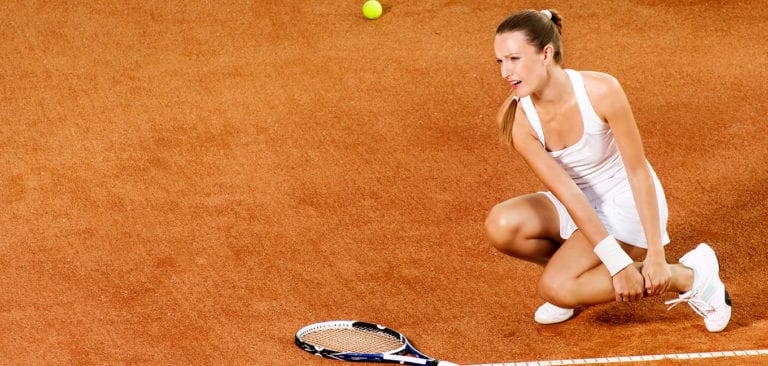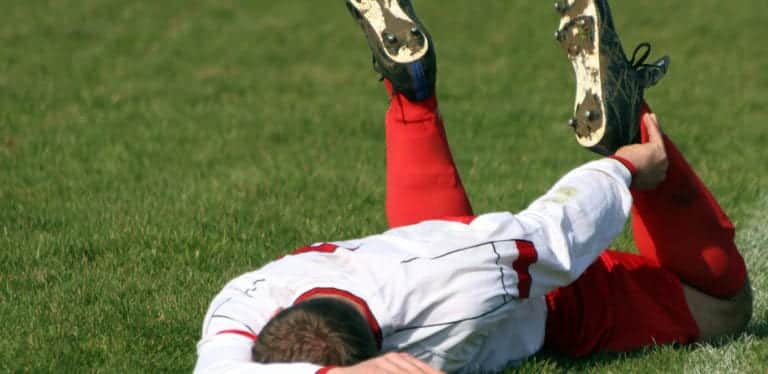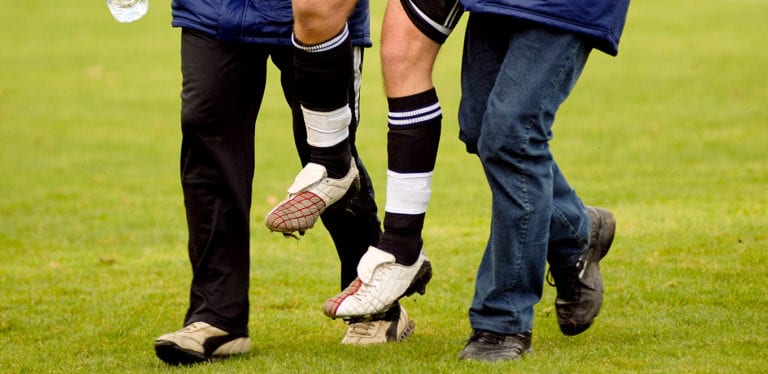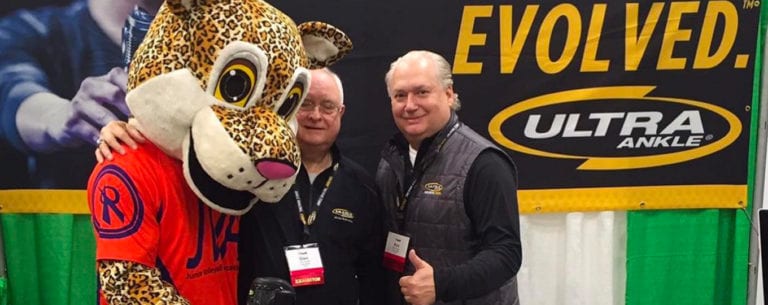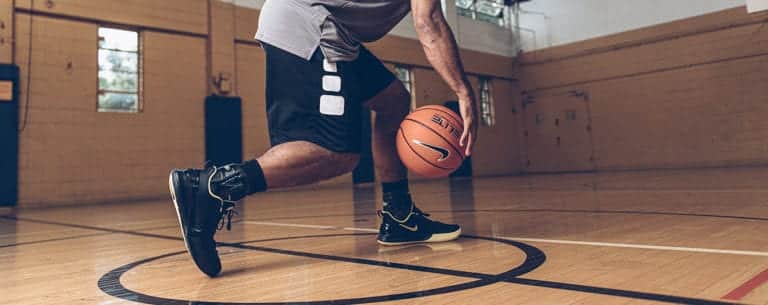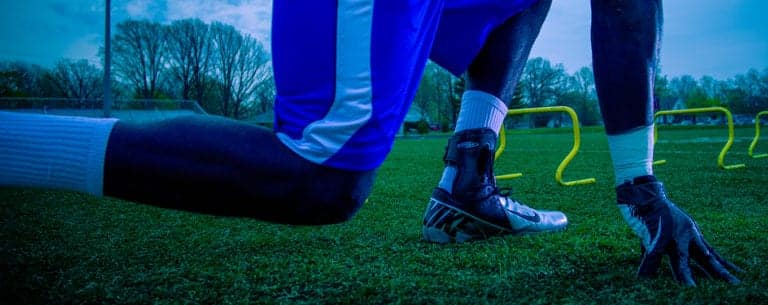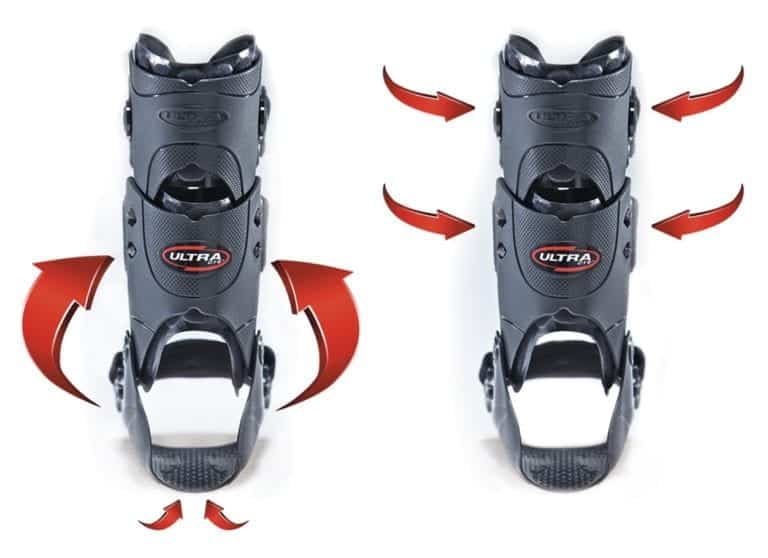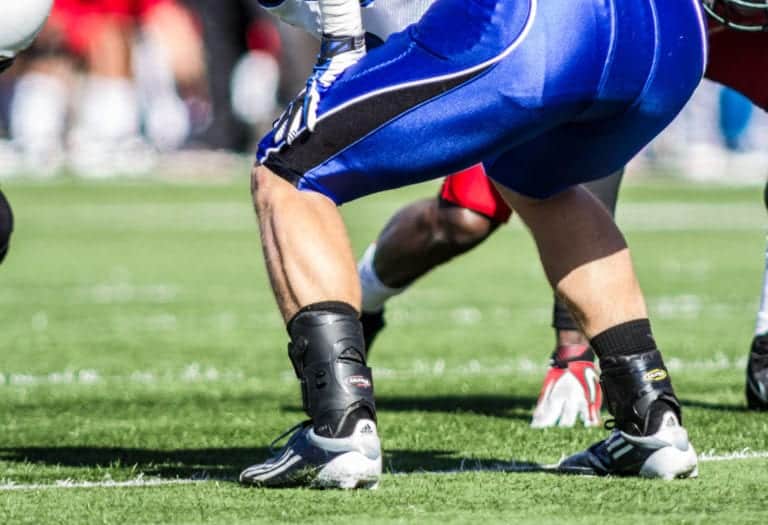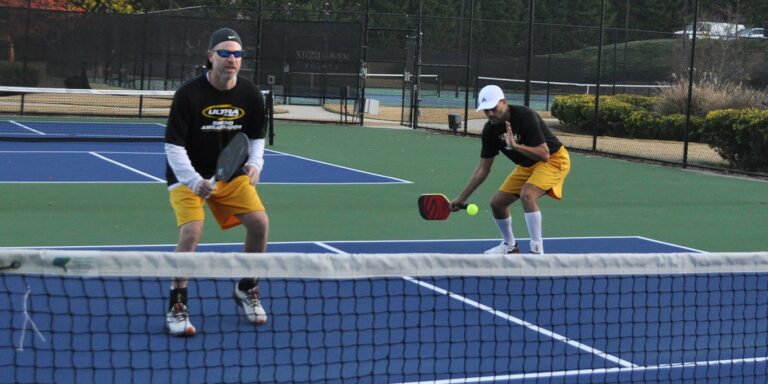
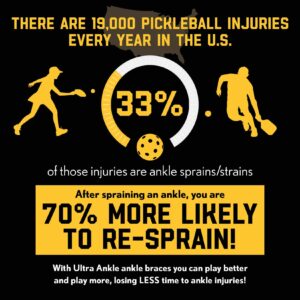
What causes Pickleball ankle injuries?
With explosive movements forward, backward, and side-to-side Pickleball can place incredible stress on the ligaments that hold your ankle joint together. Moving laterally or accidently stepping on your double’s partners foot can cause the most common ankle injury in Pickleball – the inversion ankle injury. An inversion ankle injury involves the ankle excessively rolling inward either stretching or tearing the ligaments on the outside of the ankle. Once the ligament is stretched from excessive ankle turning, it remains stretched causing the ankle to become loose and often unstable, making you more susceptible to suffering from another ankle injury. The only way to stop this cycle of ankle sprains is with a proper rehabilitation program and a functional ankle brace that allows full natural ankle range of motion while providing support and stability to the ankle joint.
Which ankle brace is the best for Pickleball?
Some pickleball players wear the lace-up style ankle supports primarily because they are inexpensive and work like a reusable ankle tape job. A lace-up is basically a corset that restricts all ankle range of motion which is not ideal when you are trying to keep the ankle strong and maximize performance. When you’re restricting normal up and down motion the ankle joint is working against the lace-up brace causing it to lose 70% of its effectiveness during the first 20 minutes of activity. Additionally, most lace-ups take too long to put on and take off and are now being replaced by more advanced technologies.
Rigid plastic ankle braces are another style of ankle supports that you may see when researching ankle braces for Pickleball. These types of ankle braces have a hinge and allow free up and down ankle motion to maximize performance and keep the muscles strong. They will provide much more ankle stability than the lace-up support because the brace moves with the ankle, not against it, so the straps stay securely in place. The downside to these braces is that the rigidity can be uncomfortable and bulky in the shoe which Pickleball players typically do not like.
A third style of ankle brace that offers the performance aspect of the hinged brace with the softness and low profile of the lace-up is the Ultra Zoom. The brace shell is made of an advanced flexible material called Performathane that uses body heat to custom-fit to the ankle. The hinged-cuff design allows your ankle to move in all the natural ways while helping to prevent any excessive movement that may cause an injury.
For those athletes who prefer a hinged ankle brace with easy application I’d recommend the Ultra High-5 as it requires only one strap to secure. With the Ultra High-5 the bottom of the brace goes under the insole of the shoe, making the ankle brace and shoe work together to help protect you from ankle injuries.
To sum things up, the best ankle braces for Pickleball players are the ones that are designed to move with the ankle joint and not restrict natural ankle motion. These types of ankle braces will have a molded plastic shell with a hinge that will enhance performance and provide long-lasting ankle support.
If you’re a Pickleball player with a history of ankle injuries and want to speak with one of our certified athletic trainers about your specific situation, give us a call or send us an email and we’d be happy to help.
